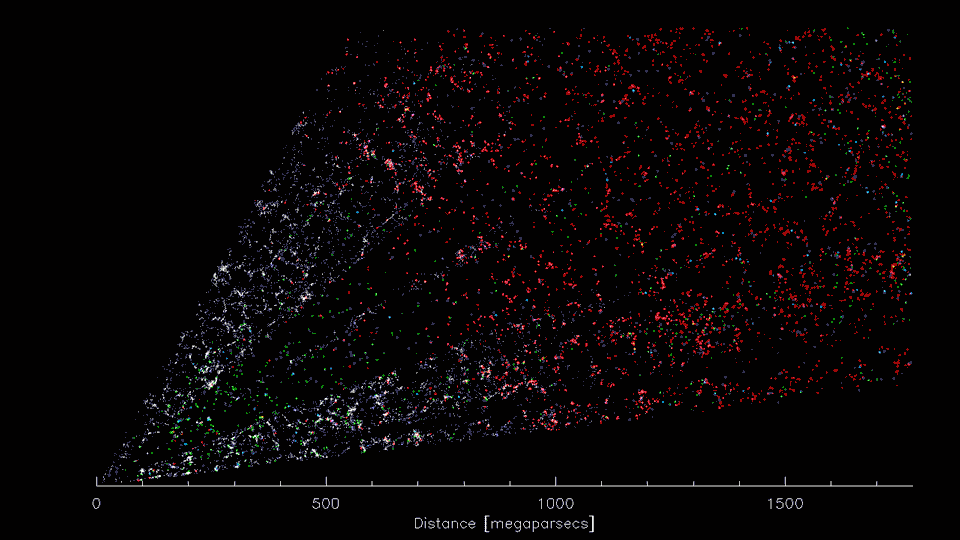Data from the Dark Energy Spectroscopic Instrument’s (DESI’s) first survey run has produced the largest and most detailed 3D map of the universe so far. The stunning image reveals the gigantic cosmic web of galaxies across billions of light-years – and this is only the beginning for the project.
The image contains 7.5 million galaxies within a distance of about 5 billion light-years in the direction of the constellation Virgo, with Earth located at the lower left. With the large-scale structure of the cosmos clearly visible, it’s not hard to see why it’s often referred to as the cosmic web, and there’s plenty that astronomers can learn from the data.
“There is a lot of beauty to it,” said Julien Guy, a scientist at Berkeley Lab, which manages the DESI project. “In the distribution of the galaxies in the 3D map, there are huge clusters, filaments, and voids. They’re the biggest structures in the universe. But within them, you find an imprint of the very early universe, and the history of its expansion since then.”
DESI collects detailed data on the color spectrum of galaxies, which can reveal how far away a particular galaxy is. Since the universe is constantly expanding, light from more distant galaxies becomes stretched out, so that its wavelengths are shifted further towards the red end of the spectrum. Therefore, generally speaking, galaxies that appear more red in color are farther away, and DESI uses this to build out its map in three dimensions.

D. Schlegel/Berkeley Lab using data from DESI
Installed on the Mayall Telescope in Arizona, DESI takes its measurements using a rather unique setup. Light streams through six large lenses, and is then captured by an array of fiber optic cables controlled by 5,000 robotic positioners, which can move the cables into place with a precision to within 10 microns. From there, the light is sent into 10 spectrographs, which splits it into its constituent colors for analysis.
The current map was produced during DESI’s first seven months of operation in 2021, and it’s only just getting started. By the time its primary mission concludes in 2026, the instrument will have cataloged over 35 million galaxies, stretching as distant as 11 billion light-years. This treasure trove of data will bring to light new details about galaxies, black holes, quasars and dark energy, the mysterious force driving the expansion of the universe to accelerate.
Source: Berkeley Lab
Source of Article